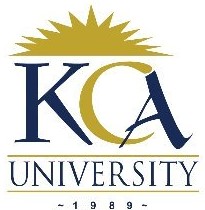 UNIVERSITY EXAMINATIONS: 2014/2015
UNIVERSITY EXAMINATIONS: 2014/2015
ORDINARY EXAMINATION FOR THE BACHELOR OF SCIENCE IN
INFORMATION TECHNOLOGY
BIT 2107 OBJECT ORIENTED ANALYSIS AND
DESIGN
DISTANCE LEARNING
DATE: APRIL, 2015 TIME: 2 HOURS
INSTRUCTIONS: Answer Question ONE and any other TWO
QUESTION ONE (30 Marks)
(a) Differentiate between the following object oriented terms: (4 Marks)
(i) object vs class
(ii) model vs diagram
(b) (i) Outline any four characteristics of the object oriented approach to systems
development. (4 Marks)
(ii) Highlight any three limitations of the structured approach to software development.
(6 Marks)
(c) Explain the steps followed in the analysis and design stages of the object-oriented approach to
systems development. (6 Marks)
(d) State significance of the Unified Modeling Language (UML) in object orientation and describe
its main building blocks. (6 Marks)
(e) A class declaration in object oriented programming is said to illustrate both the concepts of data
hiding as well as abstraction. Using C++ syntax, show how these two concepts can be
illustrated. (4 Marks)
QUESTION TWO (20 MARKS)
(a) Differentiate between a model and a diagram. (2 Marks)
(b) (i) Using suitable symbols, describe the main parts of a use case diagram. (6 Marks)
(ii) Describe the following use case relationships, giving an example scenario of each one
of them. (6 Marks)
1. Includes
2. Extends
3. Uses
(iii) Draw a suitable use case diagram based on the description given below: (6 Marks)
You are asked to model a system for a video library. The librarian stocks both DVDs and
video tapes. When a potential client visits the shop, the librarian checks in the database to
establish whether the client is registered or not. If the client is not registered, he/she is
advised by the librarian to register with the library first before any services could be rendered.
Once a client has been registered, he/she is eligible to borrow at most one library item per
week. The item borrowed must be returned before any other item can be borrowed. If the client
does not return the item within a month, he/she is surcharged a certain amount per day up to the
time he/she returns the item.
QUESTION THREE (20 MARKS)
(a) The terms visualization and documentation are some of the elements achieved via the use of
UML. Explain the meaning of these two terms. (4 Marks)
(b) (i) Explain the benefits of the Unified Software Development Process (USDP).
(4 Marks)
(ii) Using a diagram explain the main phases of USDP. (10 Marks)
(c) State the difference between a product and a project in software development. (2 Marks)
QUESTION FOUR (20 MARKS)
(a) Sequence and collaboration diagrams are the two main types of interaction diagrams. Using
suitable diagrams distinguish between these two types of diagrams. (6 Marks)
(b) (i) Explain two advantages of inheritance as used in object orientation. (2 Marks)
(ii) Write a suitable program using C++ to illustrate the concept of inheritance.
(6 Marks)
(c) Explain the following types of models, giving an example diagram for each one of them:
(i) static models
(ii) behavioural models
(iii) dynamic models
QUESTION FIVE (20 MARKS)
(a) (i) Systems analysis is a term commonly used in the systems development.
Compare and contrast this term as used in both the structured and the
object oriented
approaches. (6 Marks)
(ii) In the context of analysis, discuss the concept of robust analysis. (3 Marks)
(b) (i) State what you understand by a class diagram. (2 Marks)
(ii) Using a suitable diagram, explain the parts of a class diagram. (5 Marks)
(c) (i) State what you understand by the term multiplicity as used in
UML
(1 Mark)
(ii) Explain any three types of such multiplicities. (3 Marks)
(6 Marks)
